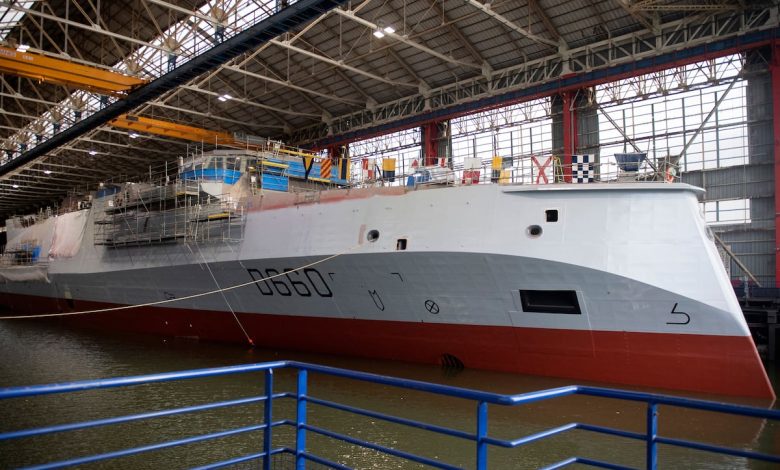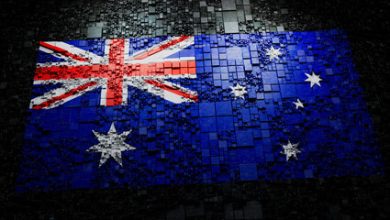Sweden sees frigate decision early next year as France touts 2030 date

PARIS — Swedish Defense Minister Pål Jonson expects a decision early next year on the country’s planned purchase of four frigates, with the government awaiting advice from procurement agency FMV and the armed forces after a survey of available options, he said on Monday, following a meeting with his French counterpart Catherine Vautrin.
The ministers discussed the Swedish frigate program, French interest in Saab’s GlobalEye airborne early warning and control aircraft, as well as aid to Ukraine, they said in a press conference in Stockholm following their meeting. Vautrin said France would be able to supply a fully equipped and armed frigate in 2030, the target set by Sweden for first deliveries.
“We re looking what frigates there are that are available, that would also suit our quite ambitious timeline,” Jonson said. He said the FMV completed a market survey, but no decision has been made. “The ambition is to have two frigates ideally by 2030 and another two by 2035.”
The air-defense component of the new frigate will also be important, and a step for Sweden towards integration into NATO’s Integrated Air and Missile Defence program, Jonson said.
Sweden in May 2024 announced a change in plans to buy surface combatants, with the FMV saying the new vessels would be larger than the current Visby-class corvettes, and with the country prepared to consider off-the-shelf designs rather than an entirely Swedish solution.
France in October offered Naval Group’s FDI frigate to Sweden, and is proposing a partnership with the Swedish defense industry, notably Saab, according to Vautrin. The Swedish program is a new chance for Naval Group to sell its frigate with a distinctive inverted bow, after Norway picked the British Type 26 frigate over the smaller French design earlier this year.
The FDI has a strong focus on anti-air capabilities, with a Thales Sea Fire radar designed to support long-range air defense and equipped with 16 to 32 vertical-launch cells that can fire MBDA Aster 15 and 30 missiles. Meanwhile, the primary role of the Type 26 is anti-submarine warfare.
The French Navy took delivery of its first FDI frigate, the Amiral Ronarc’h. in October, the first of five planned vessels. The Hellenic Navy earlier this month signed a contract for a fourth FDI frigate, on top of three vessels currently under construction.
Vautrin said the Amiral Ronarc’h will visit the Swedish seaport of Göteborg at the start of next year.
Naval Group’s Defense and Intervention Frigate has a length of 122 meters and displaces around 4,500 tons, making it smaller than new-generation frigates being built or planned in Spain, the United States, Italy, Germany and the United States.
The ministers also discussed Saab’s GlobalEye, which France is looking at “with a lot of interest” as the country seeks to replace existing equipment, Vautrin said. “GlobalEye is a product that interests us in terms of surveillance, and that’s the reason why France will have announcements to make on the topic.”
France currently operates four Boeing E-3F planes in the AWACS role, and signed a letter of intent in June concerning the GlobalEye.
France seeks to build up its relation with Sweden and be a partner, not just be a client, and “it’s in this spirit that we’re heading towards the acquisition of a program such as GlobalEye,” Vautrin said, with the minister expressing hope that Sweden could similarly be a partner for frigates.
Jonson and Vautrin also discussed aid to Ukraine, and both said letters of intent by Ukraine to acquire Saab’s Gripen and Dassault Aviation’s Rafale are complementary.
“The Ukrainian side has been very clear from the onset that they expect to have a mixed fleet of about 250 aircraft,” Jonson said. “This is not yet a business deal between any of the countries, it’s a letter of intent, but it’s a strong political message on both sides that we want to make this happen.”
Europe’s interest is for Ukraine to have strong air-defense capability, according to Jonson, who said he and his French counterpart touched on financing, with both agreeing the time is right to use Russian immobilized assets to provide support to the embattled country.
Vautrin said Ukraine will need to equip itself to ensure long-term security, including after a ceasefire or peace deal, “and it’s in this spirit that you should see these agreements.”
Rudy Ruitenberg is a Europe correspondent for Defense News. He started his career at Bloomberg News and has experience reporting on technology, commodity markets and politics.







